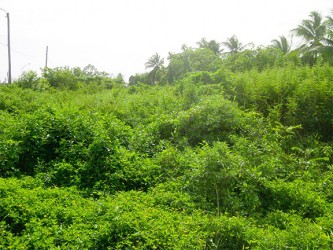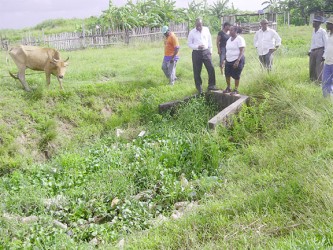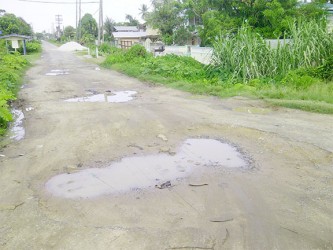A Partnership for National Unity (APNU) outreach on the West Coast Demerara on July 3 saw residents complaining about the poor infrastructure dogging their communities.
APNU visited De Kinderen and Tuschen to listen to residents’ complaints about the state of their communities, underscoring the need for local government elections and the strengthening of the local democratic institutions across the country. Myriad problems facing residents were uncovered which includes roads with potholes that could swallow entire cars; a broken bridge between De Kinderen and Meten-Meer-Zorg that children once used to get to school; culverts completely clogged by vegetation and garbage; trenches and drains filled with forest-like vegetation and extreme flooding at times of rainfall.
Residents collectively complained that the flooding was severe because of poor drainage works or none at all. They cited the main drainage canal on the public road that resembles a forest, which they say has not been dug in 20 years. The waterway, they complained provides a habitat for dangerous animals such as snakes and alligators. A representative from the council said work was planned by the Neighbourhood Democratic Council but never approved by the regional authority which causes them to feel slighted as a community.
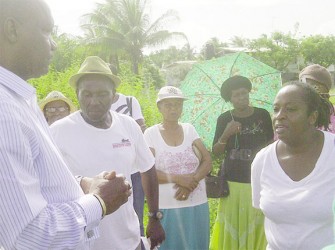
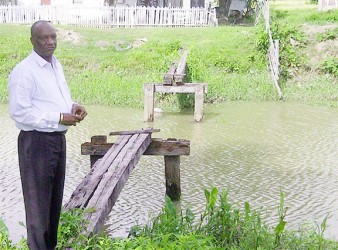
Harmon told the residents that they need to be more vociferous in raising these issues and come together as a community to take action. He promised the residents his support in having the matters affecting them resolved by pressuring the NDC and higher authorities, while urging them to engage their cooperative spirit and do some remedial works themselves.
Moving to another part of De Kinderen, residents showed Harmon a bridge that once connected the village to Meten-Meer-Zorg; the middle has collapsed. This bridge they say was another project that was provided for by the NDC, but denied by the higher authority. A resident by the name of Samantha Clarke, said she took matters into her own hands and wrote to the media to bring some attention to the dilapidated bridge in 2011, to no avail. Residents said the bridge was primarily used by school children, as an alternative to the busy public road. Just near the bridge was a garbage pile in the trench and culvert, which was also filled with vegetation that they say has not allowed water to flow for quite some time.
Over at Tuschen, bad roads prevailed. The team eventually stopped at a sunken sewerage pipe that was not visible. Residents said poor engineering and non-consultation with them caused the authorities to place the pipe too deep in the ground resulting in the backlog of water and consequent flooding. Again Harmon reiterated the need for the restoration of Guyana’s communities, which should be addressed by the local government institutions.
